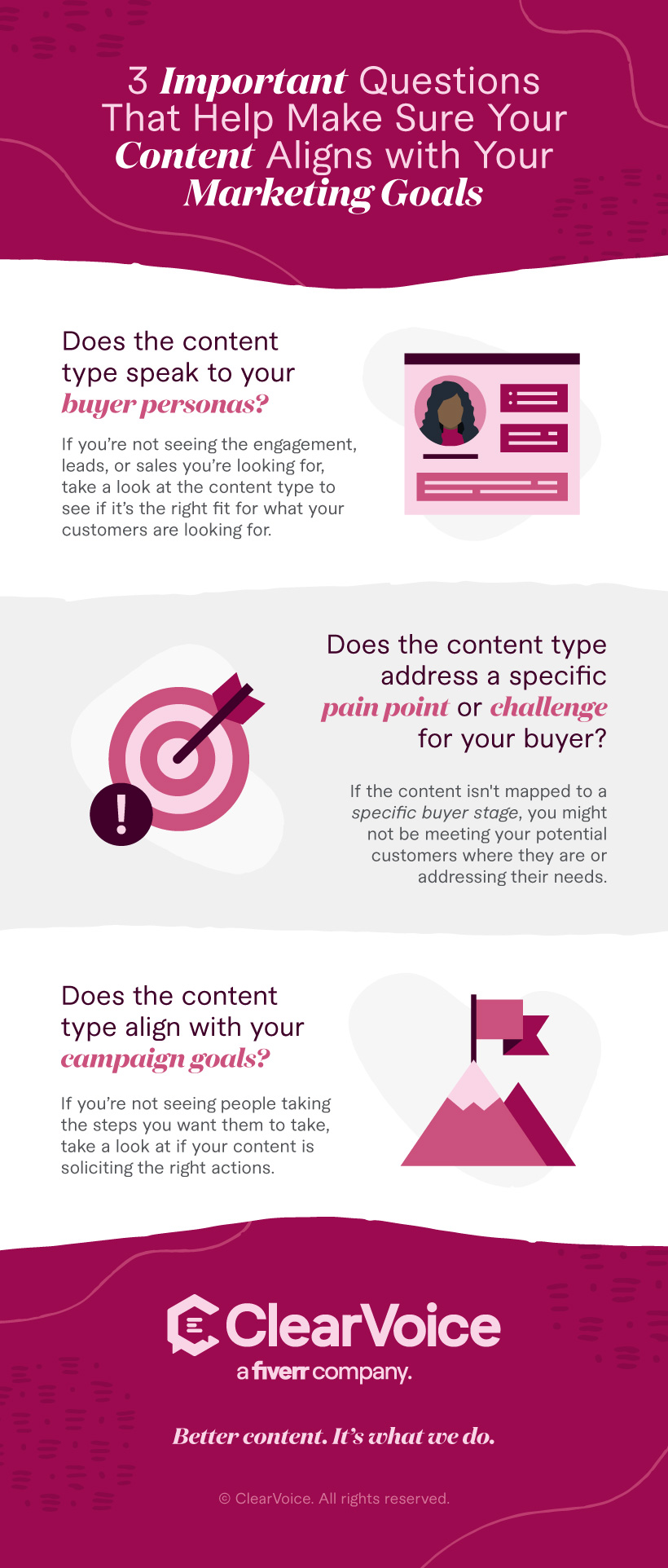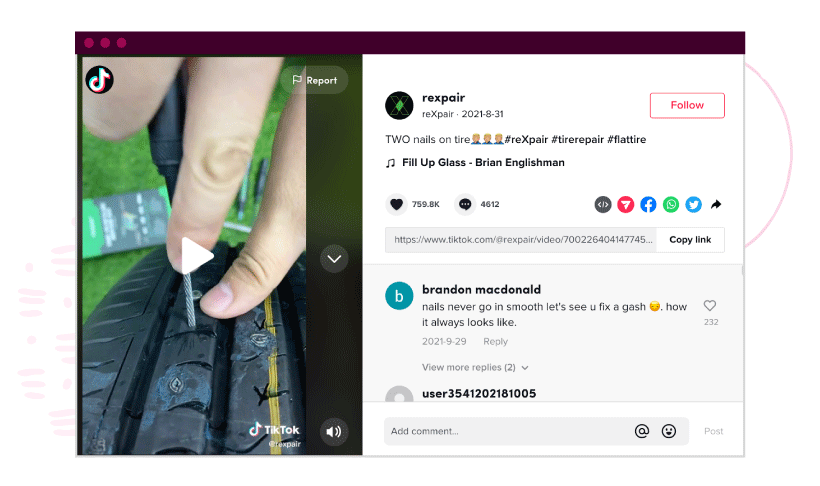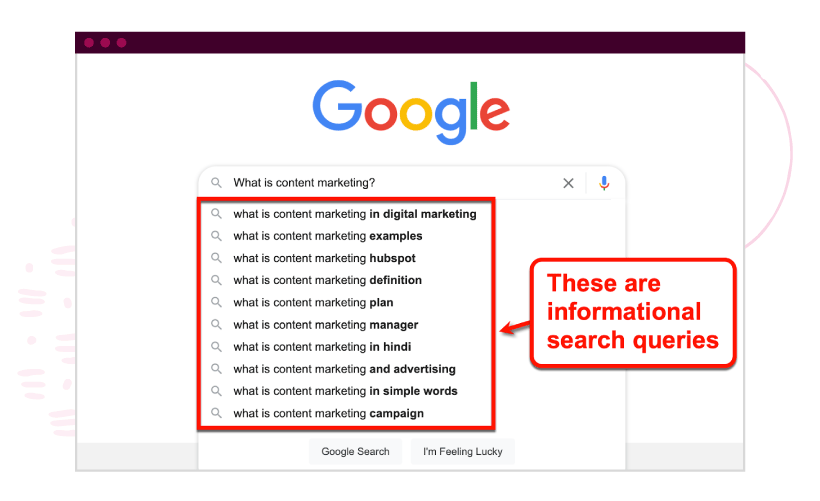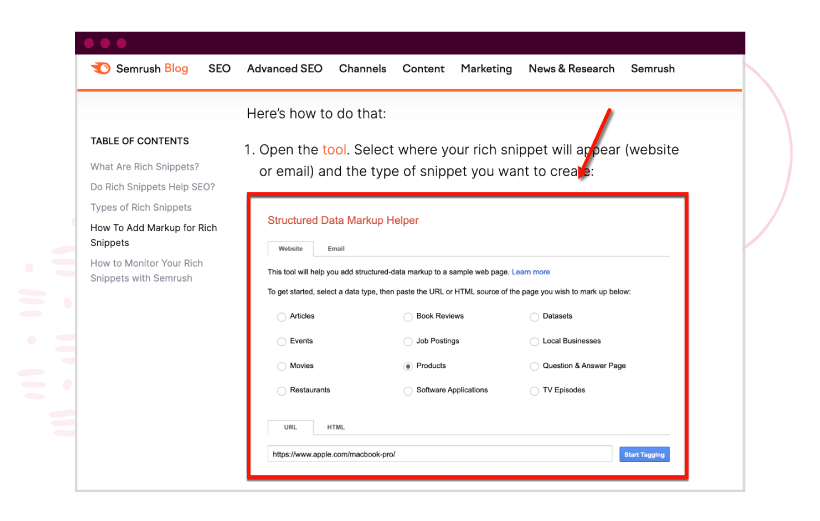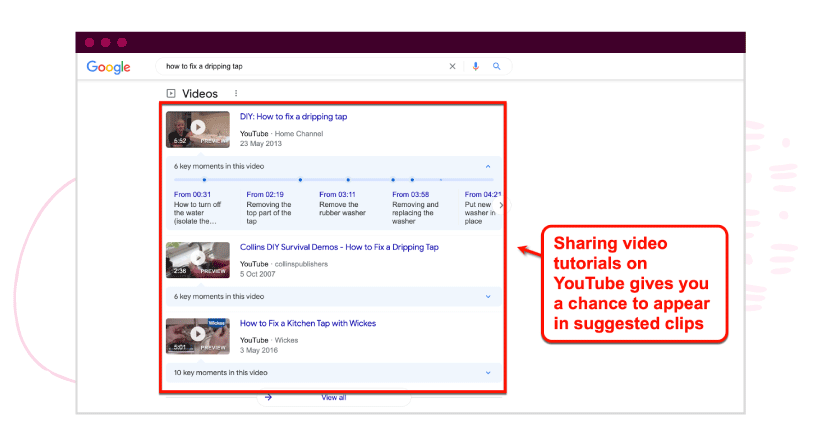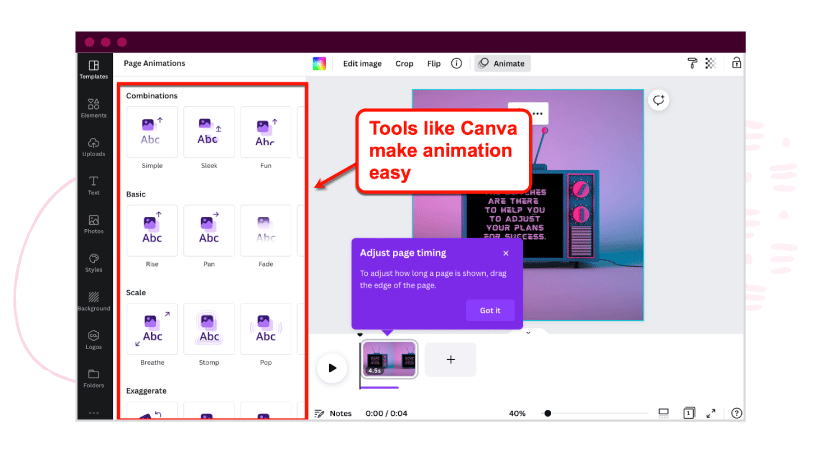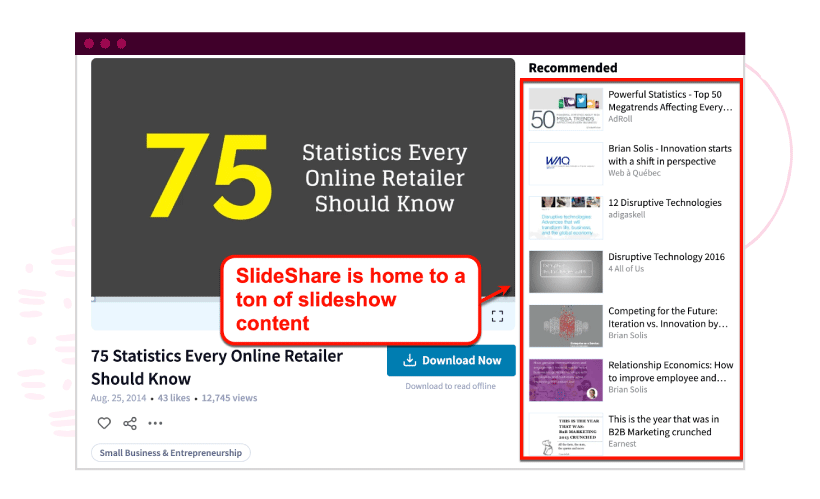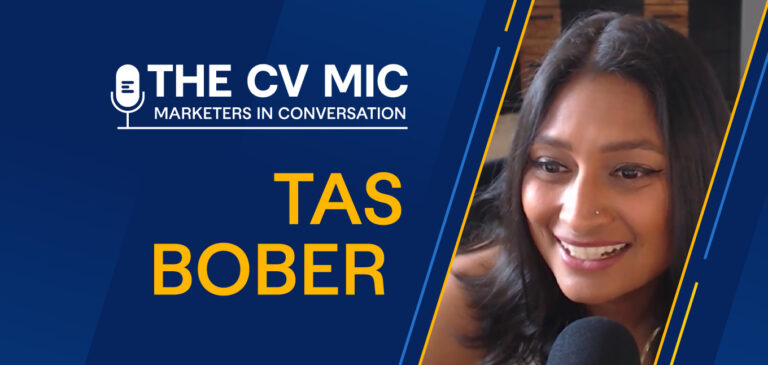Content is always on every marketer’s mind. But do you know what inbound marketing content types will resonate with your audience consistently?
We do.
This comprehensive guide covers everything you need to know about the best content types for your inbound marketing.
We’ll cover the role of content in inbound marketing and how to decide what content to create. Then, we’ll take you through the top 25 content types and how to maximize their effectiveness for your brand.
The Role of Content in Inbound Marketing
The goal of inbound marketing is simple: to make customers come to you.
How do you do that? You create valuable and enriching content that authentically draws in your target audience. Just like content marketing, the success of inbound marketing relies heavily on the following:
- Relevance: Your content should speak directly to your target audience’s needs, wants, and pain points. It’s not just about producing content; it’s about producing the right content that resonates and offers solutions.
- Quality: In an oversaturated market, only the highest quality stands out. Your content must be well-researched, well-written, and visually appealing to keep your brand competitive.
- Distribution: Even the best content can go unnoticed without the proper distribution channels. Utilize SEO strategies to ensure you rank high. Channels like social media platforms and email campaigns can ensure your content reaches your audience effectively.
Incorporating these three elements helps you craft value-packed content that establishes your brand as an authoritative voice and naturally encourages your customers to enter your sales funnel.
But to successfully do that, you need to understand the different inbound marketing content types, what they’re for, and when to use them.
What content types should you create?
You know you need content. But which kind? As you’re strategizing your content creation, ask yourself these three questions:
As you think through which kinds of inbound marketing content types will mesh with your buyer personas, customer journey, and campaign goals, check out Semrush’s State of Content Marketing 2023 Report.
According to their survey, Video has taken the number one spot for the most popular content type. Also, 55 percent of all marketers reported that short-form articles and long-form blog posts were still two of the top-performing content types — case studies and success stories round out the top five.
So, if it makes sense for your company, your inbound marketing should include some of these content types. If you’re still not sure, keep reading for our breakdown below.
Top 25 Inbound Marketing Content Types
After you’ve answered the three questions above, you’ll need to decide which content types align best with your strategy.
Our team at ClearVoice has curated a list of the most requested inbound marketing content types from our brand and agency clients. Here they are:
1. Short-form video
Right now, video is dominating content marketing. Ninety-one percent of businesses use video as a marketing tool. And 96 percent of marketers say video is critical to their content strategy.
Short-form videos match people’s current attention spans. They especially appeal to the younger audience on social platforms like Instagram Reels, TikTok, and YouTube Shorts.
From a marketing perspective, short-form videos are advantageous because of their low production cost, the potential for instant gratification, and sheer rise in popularity. You can use them to showcase anything from your company culture and business process to a product or service highlight.
Here’s a popular example of a short-form video from REXPAIR’s TikTok page:
Image Source: TikTok.com, @rexpair
2. Long-form blog posts
Blog posts are the bread and butter of both content and inbound marketing.
Blogs aren’t supposed to promote or sell your products or services. Instead, they’re designed to create an authentic connection and build a relationship with your community. They provide readers with the information they need to solve problems and fill knowledge gaps — without being forced to buy something.
Blog posts are incredibly malleable. You can create a posting schedule that suits your workflow and reader demands. You can finesse them to speak to any buyer persona or funnel stage. And they can live anywhere you choose: your website’s blog, a niche site you host, or a guest post on a partner website.
Long-form blog posts can be especially effective as top-of-funnel content, capturing people searching long-tail keywords. They cater to potential leads performing “informational” search queries on Google.
Image Source: Google.com
Most marketers classify long-form blog posts as containing more than 1,000 words. But don’t use word count as a benchmark to attain higher rankings and reap the full benefits of long-form content.
3. Short-form articles
Short-form articles pair well with long-form blog posts.
They’re fun to write and an engaging way to introduce your brand identity to your target audience and establish a quick connection. Plus, they can be a great way to repurpose your long-form blog posts into more bite-sized, digestible content. You can also use them as cluster pieces for your long-form pillar articles.
Short-form articles are typically under 1,000 words. Not all of your topics are going to require 2,000 words. And with people’s shrinking attention spans, a short article can give your audience the exact information they need without wasting time.
Concise and complete — that’s the name of the game.
4. Case studies
When you have a lead that’s unsure if your product or service will apply to them, send a case study.
These in-depth, fact-driven documents tell the story of a satisfied consumer. A case study can be effective at any funnel stage but is most often used as a closing tactic for bottle-of-funnel (BOFU) folks. Seeing one last glowing recommendation can convert a lead into a sale.
Google shares a case study about its client, Swarovski. The jewelry retailer wanted to shift consumers’ perspectives to make their accessories go-tos for everyday moments, not just special celebrations. In the study, we learn that Shopping Ads and Google Images were utilized to create a mobile-rich experience for the retailer, growing online sales by 50 percent yearly. Nice.
5. Customer success stories
Much like case studies, customer stories are used to entice future buyers to give a brand a try.
Customers love hearing from other satisfied consumers. That’s why success stories can be approached with a journalistic feature-story style by a freelance writer or even be created by customers themselves (with a pro editor to polish the content, of course).
These personal anecdotes speak directly to your target audience from the consumer’s perspective.
I’ll give you a good example. Tailwind, a social media scheduling tool, reached out to ClearVoice because they were getting killed by their competitors regarding content output and SEO strategy. Through our managed content creation and expert SEO specialists, we improved their SEO and scaled up their content production to increase blog traffic by 9x and improve weekly blog output by 500 percent. Not too shabby.
6. Webinars
Want to move those looky-loos into the MOFU? Host a free webinar with helpful tips and insight about your product. Educational-focused webinars are lead magnets that can quickly build trust and confidence in your brand. You might ask for the assistance of a scriptwriter and graphic designer to polish your presentation.
Zoom, a popular meeting-hosting platform, offers webinars about its services so potential users can learn about the benefits and technology available. Currently, the Upcoming Events listings show webinars on “7 Strategies for Better Productivity” and “Boosting Revenue with AI-Driven Customer Experience.”
7. Livestreams
Livestreams are a relatively new content format used in digital marketing that’s climbed up the rankings.
With live streaming, you broadcast live video over the internet, usually through platforms like Twitch, YouTube, and Facebook Live.
Businesses, influencers, and individual brands can livestream anything from virtual events and interviews to radio shows, podcasts, and product reveals. They give the audience a sense of “being in the moment,” which makes for a memorable and compelling experience.
Mega brands like Apple routinely stream crucial announcements and product launches. And with the capabilities offered by live streaming tools like Facebook Live, small businesses can follow suit by streaming important events.
8. EBooks
Sometimes, a long-form blog post works best as an eBook.
eBooks are perfect for providing in-depth, high-value expertise on a specific topic for your audience. They’re also great for capturing leads by providing access to a downloadable version of them if you sign up for an email list.
They can also be used to close a sale at the end of the customer journey or even entice recurring sales from a cherished customer.
Web security company Duo offers an online library of ebooks that dig deep into topics such as multi-factor authentication (MFA), remote access, and single sign-on (SSO). These assets give potential and current customers the hand-holding necessary to understand complex tech topics backed by studies, user examples, and actionable advice.
9. Infographics
The goal of inbound marketing is to attract an audience. And as humans, we are naturally attracted to visual content. 91 percent of consumers prefer visual content to written content.
Infographics are a solid choice if you want to lean into visual content types. They present complex concepts in a simplified, visually aesthetic design that helps your audience digest data quickly. Making the information easy to grasp boosts your content’s effectiveness and builds trust.
Infographics have all kinds of advantages, like:
- Driving website traffic
- Supporting link building
- Boosting SEO
- Creating brand awareness
- Proving expertise
Bottom line, infographics offer the balance of conveying information in an attractive, engaging way.
10. Email content
Email messages have a more private feel, making them the perfect inbound marketing content type for relationship building.
Ask your readers to share their biggest challenges, aspirations, what type of help they need, etc.
You can be more personal with how you relate with your audience because your content is only available to the select few who signed up for your emails.
HubSpot explains how an automated email drip campaign can boost open rates and strengthen relationships. They also share templates you can customize for your business and explain why they work.
Tip: Most campaigns contain four to 11 emails spaced a week or more apart. Add email writing to your content plan so it doesn’t get lost in the shuffle of other content creation!
11. Social media content
Social media content encompasses several formats across platforms. It’s unique in that it enables direct engagement with your audience. It also allows you to promote your content immediately upon creating it.
Text-based content like articles, guides, and reviews are great to post on LinkedIn and Facebook. On the other hand, inspirational quotes, infographics, and photos work best on Instagram and Pinterest.
Regardless of these inbound marketing content types, two things are always present in almost all social media content: a post description and a featured image. They both play a role in getting the audience’s attention. And on platforms like Instagram and Twitter, don’t forget to include hashtags for higher searchability and relevance.
Test our different platforms and content variations for your business to see what results in the most engagement. By monitoring the analytics, you can determine what type of content your audience prefers and tailor your strategy accordingly.
Finally, social media is a great channel to repurpose your other types of content, making it twice as effective.
12. White papers
White papers are authoritative, work as a simple PDF download to entice email list sign-ups, and can be repurposed easily into small content blurbs. They also work as long-form pillar pieces on your website’s resource section or can be emailed to lingering leads who need to see more evidence before committing.
White papers tend to be straightforward, filled with facts, and persuasive.
Digital performance marketing agency iProspect shares an intriguing white paper about marketing strategies that embrace modern audiences’ evolving face, titled Exclusion to Inclusion. This asset will inspire and educate potential users of their services, moving them further into the sales funnel.
13. User-generated content
User-generated content is content created and shared by your customers. It can be an incredibly effective way to provide authentic social proof of your brand’s success. Plus, 79% of people say user-generated content highly impacts purchasing decisions.
User-generated content (UGC) is effective because it reflects real customer’s thoughts and opinions. That authenticity fosters trust and credibility around your business.
One of the most common types of UGC is testimonials. Positive customer reviews can improve your brand’s trustworthiness and increase the confidence of potential leads. They can be published on social media, review sites, or directly on your website.
Although you don’t create this content yourself, you can influence your customers to produce UGC. A common approach is to automate an email that requests reviews as soon as a customer completes a purchase. You can also offer incentives, such as discount codes or freebies, to customers who write a product review.
14. Newsletters
If you want to stay in touch with your audience periodically, use email newsletters.
Newsletters are the perfect content format for sending event updates, new product releases, customer testimonials, etc.
Like landing pages, newsletters require a clear focus and goal. Strategize a topic and craft your newsletter content around that specific topic.
Also, be sure to add a postscript message. Readers tend to remember the postscript message because it’s the last thing they see in email newsletters.
15. How-to guides
Well-written “how-to” guides are not your average, run-of-the-mill long-form content.
How-to guides include step-by-step instructions that help your audience get from point A to point B.
What makes a great how-to guide is helpful visual content, such as short videos or screenshots, to help readers better grasp each step.
Authoritative sites like Semrush use many screenshots in their how-to guides to help readers turn information into action.
Image Source: Semrush.com
16. Landing pages
Landing pages are specifically designed to influence site visitors to take action. (i.e., Click your “Buy Now” buttons, sign up for a webinar, download your ebook, etc.) They play a critical role in lead generation. Sometimes, they’re a customer’s first experience with your brand. That makes them critical to making a good first impression and communicating your core messaging and values.
As a general rule, you shouldn’t add multiple types of CTAs on your landing pages.
For example, if you’re looking to get more ebook downloads, then your landing page content should focus and be optimized for the ebook download. Don’t also tell your readers to share your content and comment. It will only distract them from downloading your ebook.
17. Data studies
When your audience craves numbers and charts, give them a data study.
This content type might be created by a content strategist, writer, and graphic designer working as a team to analyze the findings of a study, current trends, or research, then present them in a concise text with a visual format.
Data studies generally show up in middle-of-funnel (MOFU) and bottom-of-funnel (BOFU) content plans to help interested consumers learn more before making a decision.
18. Video tutorials
Video tutorials are essentially video versions of how-to guides. They start by highlighting the problem, identifying tools, and briefly describing the solution to viewers.
YouTube is one of the prime avenues for sharing video tutorials.
For one, YouTube has tools to help creators publish and optimize their videos. Google also looks at YouTube videos for the “suggested clips”rich snippet.
Image Source: Google.com
19. FAQ guides
FAQs still exist. And if a segment of your audience is in an older generation, they look for these helpful text documents on your website.
Well-worded FAQs can be great lead magnets for top-of-funnel (TOFU) visitors.
The concise, skimmable information can spark interest and help with basic questions about your company and products.
To get the most out of this sought-after website page, make the FAQ progressively more detailed so it can also be used as a resource for visitors further into your funnel.
The ice cream gurus at Baskin Robbins have outdone themselves with their sweet FAQ. It’s organized by category (nutrition, franchising, online ordering, etc.) with a simple drop-down menu interface. It also speaks to multiple audiences, including ice cream consumers and potential shop owners.
And, the cherry on top? They serve up a CTA at the bottom of the page to contact them if you still have questions.
20. Animated graphics
Creating animated graphics is a lot easier than it sounds.
Drag-and-drop design tools like Canva have easy animation tools baked into the platform. It allows you to apply animations to individual graphic elements and plan their timeline.
Image Source: Canva.com
Motion graphics mimic the power and experience of videos in grabbing your readers’ attention. They also deliver information as quickly as possible rather than requiring your site visitors to watch for a whole minute. That makes animated graphics excellent for promoting concise value propositions, ads, and lead magnets.
21. Podcasts
If you’re exploring a new way to reach time-taxed audiences, podcasts allow them to listen to your content while engaging in other activities, like commuting, showering, or washing dishes.
This content format goes beyond serial storytelling and news reports. Brands use audio to build audiences with conversational episodes while subtly promoting their products.
Consider typing in your keyword in Google’s search box when looking for topics to discuss in your podcasts.
Scroll to the section that says “People Also Ask” since it showcases many questions relevant to people searching for your keyword.
22. Slideshow presentations
Slideshow presentations are perfect for presenting data-rich information.
Platforms like SlideShare house a massive pool of slideshow content that countless brands refer to when citing data. That makes slideshows a valuable asset for brand building and traffic generation.
Image Source: SlideShare.net
If you want to use slideshows for link building, include links to your website and build a full-length article around your slideshow. That encourages other content creators to link to your website instead of linking to a SlideShare page.
Slideshows can also be used as a complement to webinars, which we mentioned before.
23. Press releases
The official currency between a brand and the media is press releases.
These documents follow a specific format and style (don’t worry, expert writers know this) that allows a business to convey pertinent information to the media about newsworthy events, such as new executive appointments and product line expansions. Press releases are the catalysts to earned media mentions and can nurture all funnel stages.
The pet lovers working behind the scenes on Purina’s website have stocked the Purina News Center with news releases accessible to consumers and the media. Topics vary from announcing a new allergen-reducing cat food to partnerships with other animal-focused organizations.
24. Magazines
Presenting a mix of content in magazine format can help move your customers down the funnel. They may start with a TOFU article and find themselves looking for contact information, pushing them to the MOFU content.
To create a stunning digital magazine, you need to hire a team of creatives — strategists, writers, photographers, videographers, and graphic designers.
24 Hour Fitness offers its health-minded friends an online magazine called 24Life.
The free publication includes workouts, lifestyle tips, and recipes, which speak directly to their audience’s challenges and needs.
This publication is a win at all funnel stages, especially when one of the stages includes retention. This publication keeps the gym top of mind when it’s time to renew that membership.
25. Roundup Posts
A roundup post is a type of content curation in the form of a “listicle” that focuses on aggregating other brands, experts, and products.
As a listicle, roundup posts are easy to make and extremely convenient for users. It can also act as “ego-bait” content that encourages those mentioned to share your post — earning you free traffic and, in most cases, a backlink.
Roundup posts can work under different themes like:
- “Experts share their thoughts on…”
- “Best tools for…”
- “Top brands to follow for…”

How to Get the Most Out of Your Inbound Marketing Content?
Alright, you’ve chosen your content types. But how do you maximize their effectiveness?
Content distribution
Embrace the reality that pressing publish isn’t an endpoint. It’s the beginning of your content’s lifecycle. It’s not enough to push a link out once and call it a day. You need to have a content distribution plan in place.
Did you optimize the content for each platform where it will live? Did you add social sharing functions to the content? Did you include CTAs to drive ongoing engagement? Has the content been added to your automated social sharing cycle so that it can go out repeatedly over the course of the year? Keep that content visible!
Content repurposing
Then, use it again. And, again. Consider adopting a repurposing mindset when you have a small team and an equally small budget. In our content-hungry economy, you can easily share information that overlaps previous content to stay top-of-mind with potential consumers and re-target hot leads who like to leave goodies in their shopping cart without checking out.
HubSpot says repurposing content can also help you reach new audiences, improve organic visibility, and reinforce your messaging, especially when it’s high-value thought leadership or authoritative content.
What does repurposing look like? Let’s take that case study you worked so hard on last quarter. Ask yourself:
- Could you pull some key quotes from it to use as #MotivationalMonday snippets on your Facebook business page for the next several weeks?
- Would sections of that long-form blog post work as small helpful blurbs for your customer-focused newsletter?
Think of each piece of content you’ve produced as a puzzle. Can you remove and rearrange the pieces to give them a new purpose — and ultimately lighten your content creation load?
Inbound Marketing Content Types: FAQ
1. What are the three types of content?
All types of content fall under three categories:
- Created: original content from scratch
- Curated: content shared from third-party sources
- Creatively curated: content shared from another source along with your insights
2. What are examples of content?
The word “content” covers a lot of digital media. Some of the most popular content types among marketers are videos, blog posts, ebooks, infographics, and podcasts.
3. What are the different types of content creators?
Content creators can be:
- Experts who formulate their own ideas
- Networkers who share the ideas of others
- Observers who obtain information through their own research
- Visualizers who turn information into graphics
- Convincers who create compelling pieces that influence the reader’s opinions
4. What type of content is best for social media?
Videos and short-form videos generate the most engagement on social media, especially now that videos play faster and more reliably. Other visual content, like infographics and high-quality images, are also popular since they help brands stand out amidst all the “content noise.”
Multiply Your Inbound Marketing Results with Robust Content Creation
Identifying the best inbound marketing content types is only the first step. To fully maximize your brand’s potential, you must invest substantial time and resources into research, strategy, creation, distribution, and optimization.
If that feels overwhelming or you need some support, ClearVoice can help. We have a proven track record of supporting businesses in their inbound marketing success.
So, if you’re ready to fast-track your inbound marketing results with high-quality, engaging content, connect with one of our content specialists today to get started.

